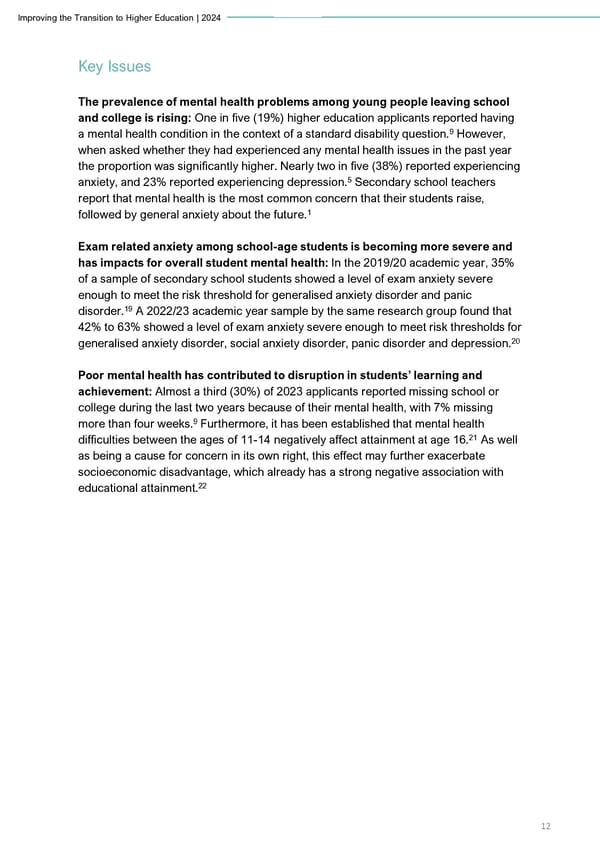Improving the Transition to Higher Education | 2024 Internal Key Issues The prevalence of mental health problems among young people leaving school and college is rising: One in five (19%) higher education applicants reported having 9 a mental health condition in the context of a standard disability question. However, when asked whether they had experienced any mental health issues in the past year the proportion was significantly higher. Nearly two in five (38%) reported experiencing 5 anxiety, and 23% reported experiencing depression. Secondary school teachers report that mental health is the most common concern that their students raise, followed by general anxiety about the future.1 Exam related anxiety among school-age students is becoming more severe and has impacts for overall student mental health: In the 2019/20 academic year, 35% of a sample of secondary school students showed a level of exam anxiety severe enough to meet the risk threshold for generalised anxiety disorder and panic 19 disorder. A 2022/23 academic year sample by the same research group found that 42% to 63% showed a level of exam anxiety severe enough to meet risk thresholds for generalised anxiety disorder, social anxiety disorder, panic disorder and depression.20 Poor mental health has contributed to disruption in students9 learning and achievement: Almost a third (30%) of 2023 applicants reported missing school or college during the last two years because of their mental health, with 7% missing 9 more than four weeks. Furthermore, it has been established that mental health difficulties between the ages of 11-14 negatively affect attainment at age 16.21 As well as being a cause for concern in its own right, this effect may further exacerbate socioeconomic disadvantage, which already has a strong negative association with educational attainment.22 12
 Improving the transition to Higher Education Page 11 Page 13
Improving the transition to Higher Education Page 11 Page 13